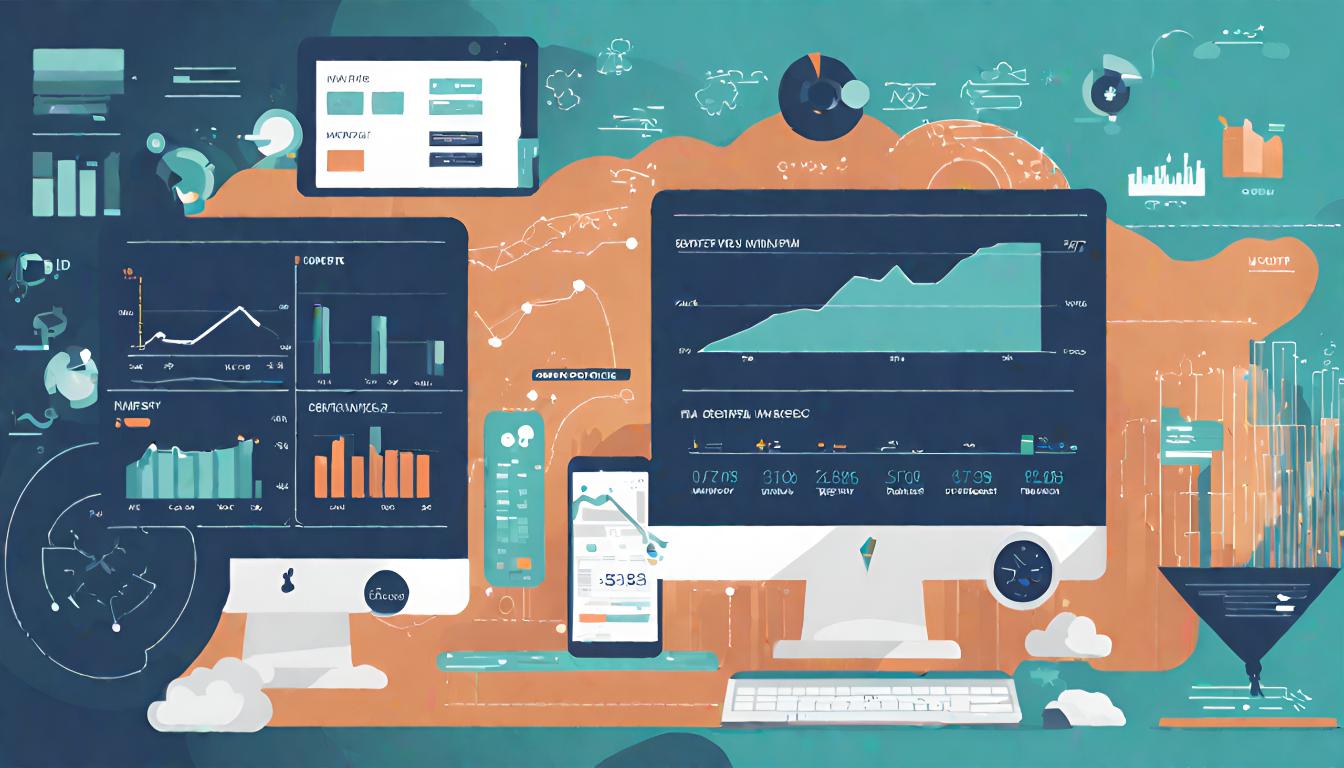The Science Behind Sales Forecasting

Article Highlights
Introduction
Sales forecasting is a crucial aspect of strategic planning for businesses of all sizes. It involves predicting future sales performance to inform decision-making, resource allocation, and goal setting. However, many organizations struggle with the accuracy and reliability of their forecasts. In this article, we’ll explore the benefits of implementing processes as the foundation of sales forecasting to drive business success.
The Challenges of Sales Forecasting
Sales forecasting poses several challenges for GTM teams, including uncertainty in market conditions, fluctuations in consumer behavior, and the complexity of sales cycles. Additionally, inaccurate or outdated data, limited visibility into sales pipelines, and lack of collaboration between sales and other departments can further complicate the forecasting process.
Components of a Repeatable Sales Forecasting Process
To overcome these challenges, you (as the leader) need to establish standardized processes that inform the forecast. This process should include several key components:
- Defining Clear Objectives and Metrics: Start by clearly defining the objectives of the forecasting process and the metrics used to measure success. This ensures alignment with overall business goals and provides a framework for evaluating performance.
- Gathering and Analyzing Historical Data: Collecting and analyzing historical sales data is essential for identifying trends, patterns, and seasonality in sales performance. This data serves as the foundation for creating accurate forecasts and informing strategic decision-making by providing valuable insights into past sales performance, trends, and patterns. Your historical data serves as a foundation for creating accurate forecasts and informing strategic decision-making. While market conditions and many other factors influence sales performance on the micro level, having historical sales data to reference macro trends for your business is hugely important.
Historical Data Analysis Example:
Find opportunity conversion rates and sales cycles over the past 2 years in quarterly chunks. Are these different when segmented by ICP, or product? If so, create baseline trend data for each relevant segment. You will use this data as a reference point when evaluating the current pipeline and making an educated guess about where you expect sales numbers to land this quarter.
- Utilizing Forecasting Methods and Models: There are various forecasting methods and models available, including qualitative, quantitative, and mixed approaches. You should select the most appropriate method based on your industry, market dynamics, and available data.
- Finding Cross-Functional Context: Effective sales forecasting requires collaboration between sales teams, finance, marketing, and other departments. By sharing insights, aligning goals, and leveraging collective expertise, you can improve the accuracy and reliability of your forecast.
Cross-Functional Context Example:
Did marketing run a program last Spring that generated 20 ICP qualified MQLs, which converted at 80%? If there’s another similar program planned this year, consider how this may impact your revenue and forecast accordingly.
- Reviewing and Iterating on Forecasts: Regularly review and iterate on forecasts based on actual sales performance and feedback from stakeholders. This allows organizations to refine their forecasting methods, adjust assumptions, and adapt to changing market conditions. Be careful not to iterate too quickly, though. More on that below!
Benefits of Repeatable Sales Processes
Implementing a structured sales process will bring numerous advantages to your organization, particularly in terms of impacting the forecast and revenue. By establishing clear deal stage definitions, criteria for progression through each stage, standards for opening opportunities, qualification guidelines, and criteria for closed-lost deals, you can significantly enhance your sales forecasting capabilities. Here’s how:
- Improved Forecast Accuracy: A well-defined sales process ensures that sales representatives accurately categorize deals based on their stage in the pipeline and likelihood of closure. This categorization provides more precise data for forecasting, reducing the margin of error in predicting future sales performance.
- Enhanced Revenue Predictability: With clearly defined criteria for moving deals through the sales pipeline, you will gain better visibility into the progression of opportunities. This visibility enables more accurate revenue forecasting by identifying potential bottlenecks or delays in the sales cycle that could impact revenue generation.
- Better Resource Allocation: By understanding the criteria for opening opportunities and qualifying leads, you can allocate resources more effectively. Sales teams can focus their efforts on high-potential opportunities that align with the company’s target market and ideal customer profile, maximizing the return on investment in sales and marketing activities.
- Streamlined Sales Operations: A structured sales process streamlines operations by providing sales teams with a standardized framework for managing opportunities. This consistency improves efficiency, reduces the time spent on administrative tasks, and allows sales representatives to focus on activities that drive revenue generation.
- Increased Win Rates: Clear deal stage definitions and qualification criteria enable sales representatives to prioritize opportunities that are more likely to convert into closed deals. By focusing their efforts on qualified leads and opportunities that align with the organization’s ideal customer profile, sales teams can increase their win rates and accelerate revenue growth.
Incorporating these elements into the sales forecasting process ensures that your organization not only improves the accuracy and reliability of your forecast but also drives sustainable revenue growth and business success. By establishing a structured sales process that aligns with forecasting objectives, you can make more informed decisions, optimize resource allocation, and achieve their sales goals effectively.
Implementing the Process
- Steps for implementing a repeatable sales forecasting process: This requires careful planning and execution. Start by assessing current forecasting practices, identifying areas for improvement, and gaining buy-in from key stakeholders. Develop clear guidelines, standardized procedures, and training programs to ensure consistency and compliance across the organization.
- A word of caution on iteration: A common mistake is to change the approach as soon as you don’t get the result you were hoping for. Instead, set expectations upfront that you are going to stick with the chosen forecasting process for at least 3mo, but ideally 12mo, before making significant changes. This is imperative because trends often take time to develop and you need to give a process ample time to understand if it’s not working, or if other factors are impacting the accuracy. Don’t make the mistake so many leaders do of changing their approach every cycle and expecting the results to improve. Just like a research scientist commits to a full trial and doesn’t simply take the first positive or negative result and run with it- you also have to be scientific in your management of the forecast.
Conclusion
In conclusion, all of your GTM processes have an impact on your sales forecast accuracy. A repeatable process for sales forecasting is essential if you’re looking to drive business success in today’s competitive marketplace. By defining clear objectives, gathering and analyzing data, collaborating cross-functionally, and continuously reviewing and iterating on forecasts, organizations can make informed decisions, optimize resource allocation, and achieve their sales goals.
Pro Tips:
- How often should I update the sales forecasts?
I suggest that you update the sales forecasts regularly, at least quarterly or as market conditions change. This ensures that forecasts remain accurate and relevant to current business realities. I’m not talking about changing your approach to finding the forecast (see above). I’m talking about updating the budget number you called for Q4 based on how Q1 and Q2 actually played out.
- How can I improve collaboration between sales and other departments in the forecasting process?
Improve collaboration by establishing clear communication channels, sharing data and insights, and involving relevant stakeholders in the forecasting process from the outset. Encourage a general mindset of curiosity across GTM departments. This can go a long way to foster a team environment where everyone is working towards the same goal: Revenue!
- What are some common pitfalls to avoid in sales forecasting?
Common pitfalls include relying too heavily on intuition or gut feelings, neglecting to consider external factors and market dynamics, and failing to incorporate feedback and insights from frontline sales teams. Other plagues to forecast accuracy include lack of sales process standardization, and lack of collaboration and communication between Marketing and Sales.
- How can I measure the success of the sales forecasting process?
You can measure success by comparing forecasted sales figures to actual sales performance, evaluating forecast accuracy and reliability, and soliciting feedback from stakeholders on the usefulness and effectiveness of the forecasting process. You need to keep track of your forecast accuracy on a rolling basis.
Commit to tracking the accuracy of your forecast on a rolling basis. For example: The forecast was 10% over in Q1, %20 under in Q2, 3% over in Q3 and 5% under in Q4. You can see that the margin of error has tightened over the course of the year. It’s you and your team’s job to uncover why. Did you get better at implementing your processes over the course of the year? Or were there factors in the later half of the year that made the task easier? Perhaps it’s some mix of the two. You can do this in a spreadsheet manually, in a BI tool, or in a forecast specific platform like Clari.
- What is an acceptable margin of error when forecasting?
Sales forecasting is hard! Consider accuracy within +/- 5% to be great, while anything north of 80% is typically good. Your renewal sales forecast should generally be easier to nail down than new business. Set different success benchmarks for each forecast as tailored to your business.
Now that you’re tracking accuracy, you have a baseline to compare to if and when you decide to make changes to your forecasting process. But again, be SCIENTIFIC! Make only changes you can measure and ideally limit the number of changes made so you have a better chance of seeing the result of each change as it plays out in your forecast accuracy trends over time.




